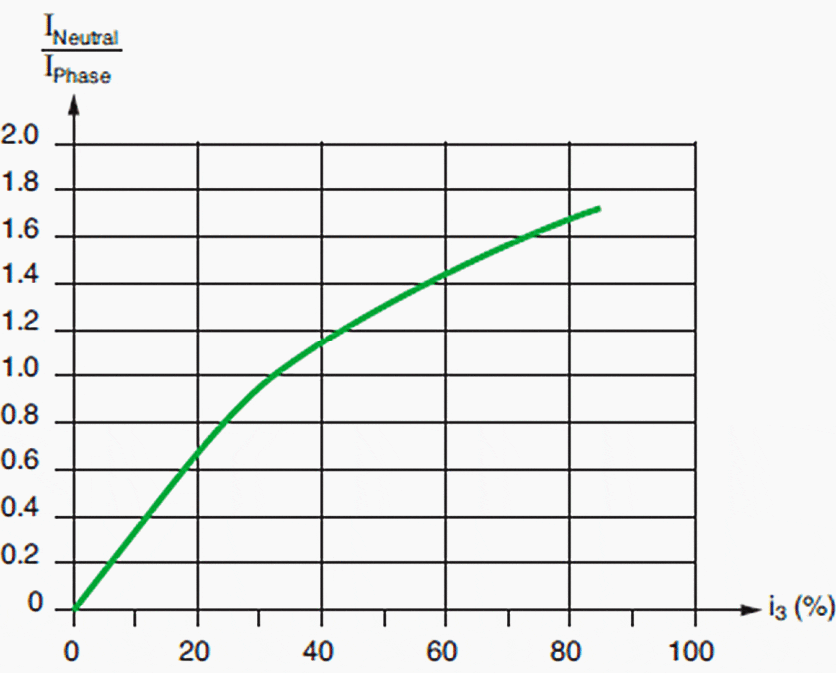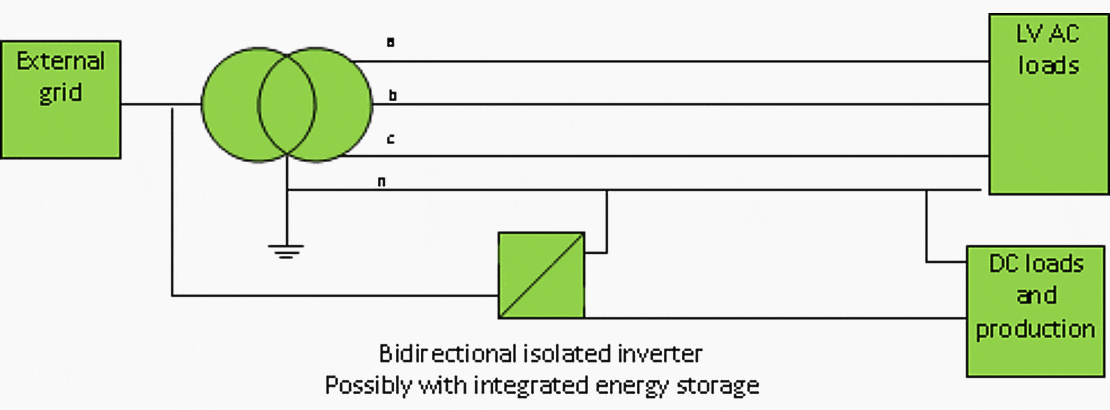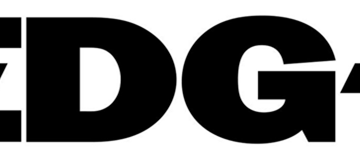2025-04-30 20:30:00
electrical-engineering-portal.com
AC and DC usability
At the end of 19th century, alternating current (AC) and direct current (DC) systems were fighting for the position of dominant electric transmission system. AC systems won the battle then, but the importance of DC electricity has increased in energy production with the rise of photovoltaic panels which output DC. DC transmission is also used today in long-distance high-voltage cables, such as transmission cables on the floors of oceans.


The integration of renewable energy production and energy storages into power grids is a common research topic. What makes this demanding is that most of PV production is installed in an LV distribution system. One option for making this easier is to change LV distribution to DC and convert the voltage to AC at the customer premises.
This publication investigates a further option, namely a concept for integrating a low voltage direct current system (LVDC) into current LVAC distribution systems to form a hybrid transmission system. The concept presented here also enables microgrid operation.
Microgrids are electric power systems that can operate independently from main distribution systems by having their own production units and power quality control devices.
Hybrid LV distribution system concept
The defining factor of the AC/DC hybrid distribution concept presented here is use of the neutral wire to transmit DC current along with the asymmetric component of three-phase AC current. The result is a system with one less wire compared to two separate AC and DC systems. This will naturally increase the load on the neutral wire, so DC injection to the neutral conductor must be limited when the AC system requires more of the capacity.
Figure 1 represents the general concept of the hybrid AC/DC distribution system.


Technical requirements and limitations
To enable use of the neutral wire for the combined DC and asymmetric component of AC current, the converter in question must have galvanic isolation on the DC side so that simultaneous operation of the DC and AC system is possible in the manner presented in Figure 1.
Without galvanic isolation, the converter would create a short circuit. Control of the converter must be capable of operation in island mode if uninterruptable power supply is needed for the AC or DC side. DC should be able to operate independently if there is a fault in the AC system and vice versa.
DC power capacity is clearly limited and variable, with the room available in the neutral conductor for DC current dependent on the status of the AC system. Although dimensioning of the neutral conductor sets the limit for maximum available DC power in a symmetric AC load situation, capacity is also affected by the 3rd harmonic.
Figure 2 displays maximum current in a neutral conductor with respect to the 3rd harmonic in the phase conductor.


It can be seen from the figure that the 3rd harmonic greatly affects the neutral current, and would also take capacity from the DC current in the examined concept.
Operational modes
One of the main targets of the hybrid distribution concept is to achieve a system capable of operating in many different situations with respect to fault location. The following figures represent these modes. The green shapes represent parts that are functioning, and the red shapes the parts that are faulty or disconnected because of a fault.
Figure 3 displays the system in normal operation.


In normal operation mode, both systems operate in parallel. Control modes depend on how the system is to be used. On a general level, the inverter operates in power control mode, and the DC side in voltage control mode. Figure 4 displays the system with external faults.


The system should be able to continue to operate for some period after a fault occurs in the external grid. This can be described as AC/DC microgrid operation. Figure 5 displays the system with AC distribution faults.


The whole AC system could be faulted, the DC part then operating as a microgrid (assuming the fault not to be in the neutral part of the AC system). Figure 6 displays the system with DC system faults.


Similarly, faults on the DC side should not affect operation of the AC system, and the DC system should be capable of shutting down safely in a fault situation.


Keep your files stored safely and securely with the SanDisk 2TB Extreme Portable SSD. With over 69,505 ratings and an impressive 4.6 out of 5 stars, this product has been purchased over 8K+ times in the past month. At only $129.99, this Amazon’s Choice product is a must-have for secure file storage.
Help keep private content private with the included password protection featuring 256-bit AES hardware encryption. Order now for just $129.99 on Amazon!
Help Power Techcratic’s Future – Scan To Support
If Techcratic’s content and insights have helped you, consider giving back by supporting the platform with crypto. Every contribution makes a difference, whether it’s for high-quality content, server maintenance, or future updates. Techcratic is constantly evolving, and your support helps drive that progress.
As a solo operator who wears all the hats, creating content, managing the tech, and running the site, your support allows me to stay focused on delivering valuable resources. Your support keeps everything running smoothly and enables me to continue creating the content you love. I’m deeply grateful for your support, it truly means the world to me! Thank you!
|
BITCOIN
bc1qlszw7elx2qahjwvaryh0tkgg8y68enw30gpvge Scan the QR code with your crypto wallet app |
|
DOGECOIN
D64GwvvYQxFXYyan3oQCrmWfidf6T3JpBA Scan the QR code with your crypto wallet app |
|
ETHEREUM
0xe9BC980DF3d985730dA827996B43E4A62CCBAA7a Scan the QR code with your crypto wallet app |
Please read the Privacy and Security Disclaimer on how Techcratic handles your support.
Disclaimer: As an Amazon Associate, Techcratic may earn from qualifying purchases.







































































































